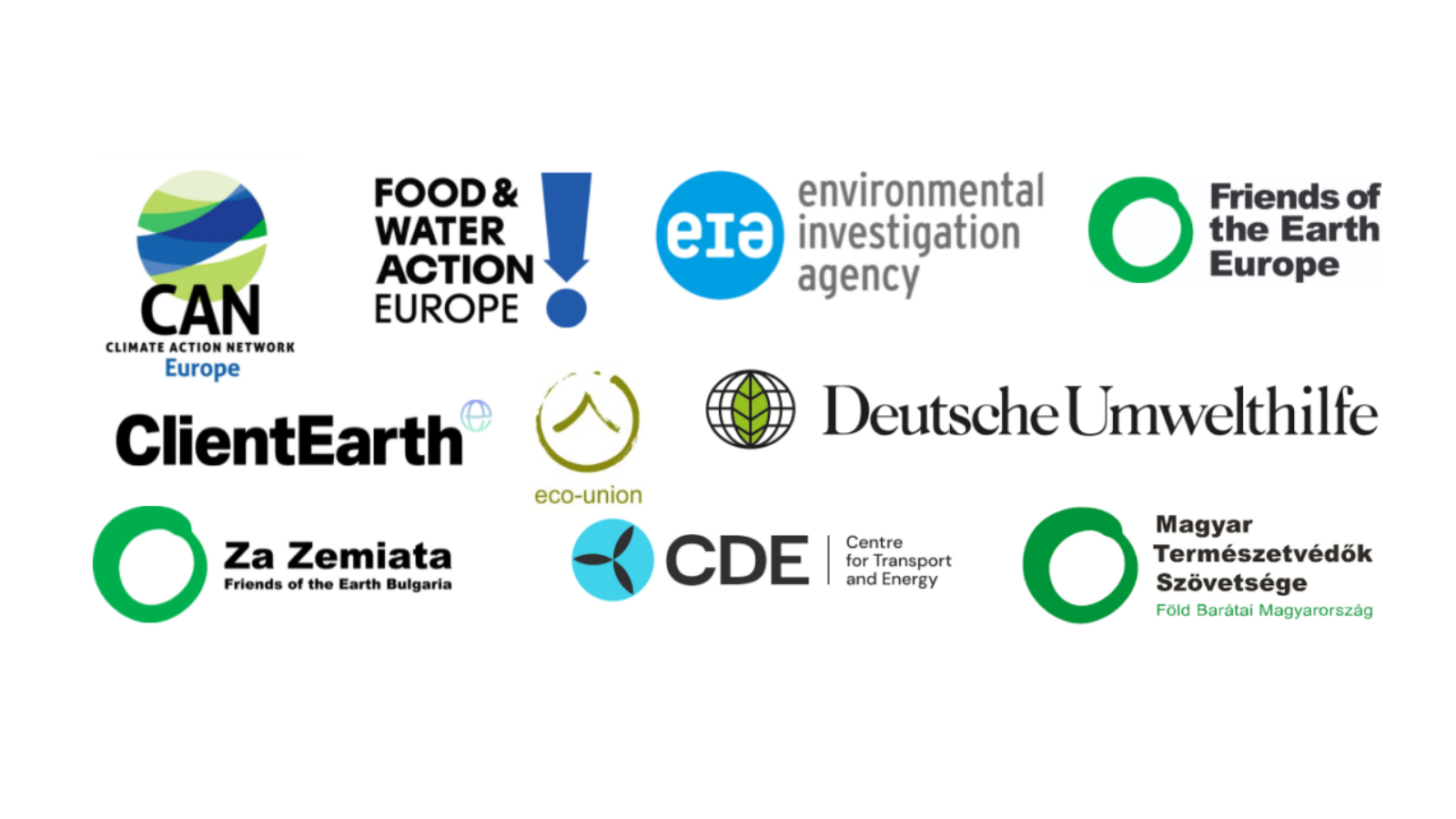POLICY BRIEF
Methane is a potent greenhouse gas and has contributed to 0.5℃ of global warming. Its concentration in the atmosphere has more than doubled since pre-industrial times, and there is strong evidence that this is due to growth in anthropogenic emissions. Methane emissions from fossil fuels account for roughly 35% of all anthropogenic methane emissions. In particular, 23% of all anthropogenic methane emissions are ascribable to the oil and gas sector and 12% to the coal sector. This briefing gives a set of policy recommendations to reduce methane emissions from the energy sector while simultaneously not losing sight of the crucial fact that fossil gas, alongside other fossil fuels, needs to be urgently phased out.
Plan for fossil gas and coal phase out
To be aligned with the Paris Agreement and contribute to limiting temperature increase to 1.5°C, the EU must phase out coal and fossil gas by 2030 and 2035, respectively. This would not only help with curbing CO2 emissions resulting from their combustion but also avoid methane emissions. For example, a recent International Energy Agency (IEA) report suggests that drastically reducing coal-related methane emissions will be primarily reached through drastic cuts in coal use, with the remaining emissions to be addressed through other measures.
Therefore, member states should develop comprehensive plans with timelines and intermediate targets to deliver on this phase out, tailored to each consumption sector (e.g. power, heating, transport and industry), national circumstances and deployment strategies for alternatives (e.g. direct electrification through renewable electricity in heating, transport and some direct use of renewables-based hydrogen in selected sectors only for which direct electrification is not viable), that will feed already to their first National Energy and Climate Plans (NECPs) revision, the draft and final version of which are due by 2023 and 2024 respectively.
Implement mandatory Leak Detection and Repair (LDAR)
Leak detection and repair obligations should be placed on all suppliers to the EU market and should include at the very least monthly site surveys and, to the extent possible, make use of remote sensing for continuous monitoring, and rapid repairs obligations with strict timelines, transparency requirements and standardised record-keeping and reporting. This obligation should enter into force as soon as possible and no later than 2023. Furthermore, legislation should make it possible for new technologies and practices to be incorporated over time in a timely manner.
Expand Measurement, Reporting and Verification (MRV)
MRV should build upon and improve UNEP’s Oil & Gas Measurement Partnership (OGMP) 2.0 (a voluntary initiative to help companies reduce methane emissions in the oil and gas sector) and must contain clear requirements and reporting, moving to actual measurement data as soon as possible, beyond aggregate emissions at asset level to detailed emissions information, while limiting exemptions to a bare minimum. Obligations should enter into force no later than 2023.
Similar measures should be implemented in the coal sector. Recent satellite data shows that coal mine methane detected by satellites in the atmosphere is far greater than emissions reported by mining operators. This evidence that comprehensive monitoring in the coal mining sector is severely lacking.
Ban Routine Venting and Flaring (BRVF)
The EU should immediately ban routine venting and flaring across the entire supply chain except when performed in predefined emergency situations. This ban should cover, inter alia, fossil gas vented or flared when deemed not commercially viable to be recovered as well as equipment specifically designed to vent during normal use. The ban should also address venting of coal mine methane (CMM) emissions and, following the mine closure, also abandoned mine methane emissions (AMM). Provisions should be put in place to ensure that coal mining companies are made liable both for CMM and AMM emissions.
Extend mitigation measures across the supply chain
Given that the vast majority of fossil gas used in the EU is imported and that methane emissions occur across the entire supply chain, it is critical that monitoring and mitigation measures applicable to EU domestic actors (MRV, LDAR and BRVF) extend across the supply chain, up to the point of production, including to imports, to ensure the overall climate benefit is not dwarfed by constraining methane emissions reduction only within EU borders. Such measures would be in line with the European Parliament own-initiative report on cutting methane emissions can be adopted in compliance with WTO obligations.
Price methane intensity of fossil gas
Lifecycle methane emissions of fossil gas should be priced. A recent study authored by the Forum Ökologisch-Soziale Marktwirtschaft (FÖS) and the Green Budget Germany explores various instruments to incentivise measures to abate methane emissions arising from fossil gas production in the EU and gas imports into the EU.
Adopt a mandatory methane performance standard
Adopt a mandatory methane performance standard that caps methane emissions at 0.2% along the entire supply chain for both domestic and imported gas sold and consumed in the EU by 2025.
Address emissions from unused and abandoned wells and mines
The EU should include provisions to require unused and abandoned wells to be sealed. Similarly, it should include provisions requiring coal mines to be managed in a way to avoid methane leakages in any technically adequate way possible when committing to closures. Regulations and proper enforcement must ensure adequate measures to address closed coal mines are broadly applied. The costs of such additional investment must be borne by operators, in line with the polluter-pays principle. Furthermore, the EU should establish a funding programme to ensure unused and abandoned wells and coal mines are adequately treated when ownership is unknown or in case of bankruptcy, where the polluter-pays principles would not apply.
Avoid false sustainability claims
To prevent deceiving consumers and unfair competition, EU rules must prohibit environmental claims that focus only on one aspect of fossil gas while excluding other of its known environmental facts. Companies should not mislead consumers by promoting fossil gas as clean even if methane emissions along the supply chain are addressed. Even if fossil gas were not subject to methane emissions, it would keep damaging the climate (through the release of CO2 emissions in its combustion, e.g., in gas turbines, or reaction, e.g. in the Steam Methane Reforming process). Additionally, it would continue affecting human health through pollutants released during hydraulic fracking and during the combustion of fossil gas, e.g. in households’ boilers and gas stoves.
Consider petrochemical feedstocks in any framework
The petrochemical sector should be included in any framework on MRV, LDAR and BRVF applicable to the energy sector. This is because fossil gas comprises varying levels of dry gas (i.e. methane) and wet gas (e.g. natural gas liquids, such as ethane and propane), which are not only used in the energy sector but also as feedstocks in the petrochemical sector. For example, methane is a feedstock for methanol, while ethane and propane are feedstocks for ethylene and propylene, respectively. Naphtha, which is derived from oil, is also a feedstock for petrochemicals. Petrochemicals are used to produce plastics and fertilisers, among other things. According to the IEA, petrochemicals account for 8-14% of the total primary demand for fossil gas and oil and will soon become the world’s most significant driver for oil demand.


